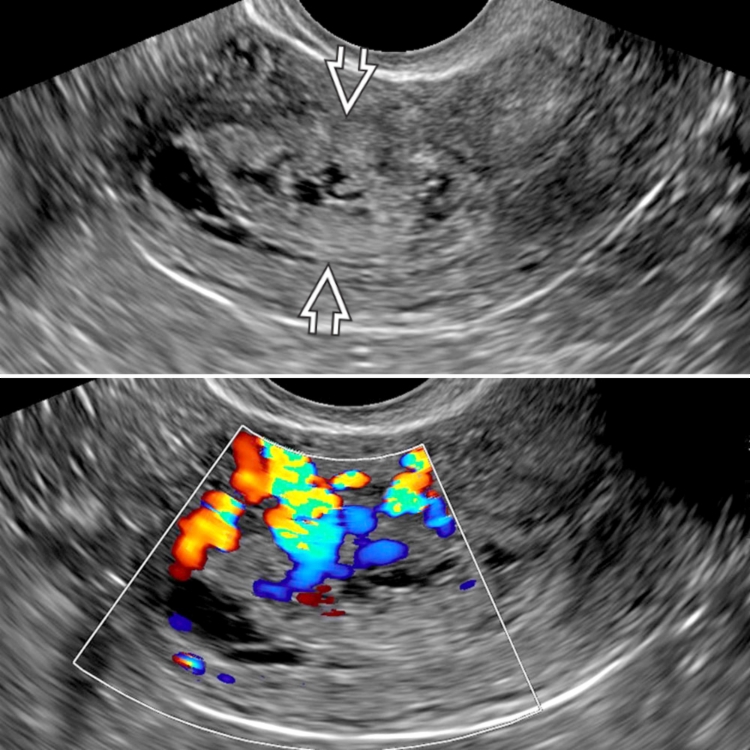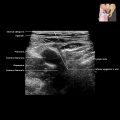KEY FACTS
Terminology
- •
Trophoblastic proliferation without fetus
Imaging
- •
Classic 2nd-trimester findings described as “Swiss cheese” or “cluster of grapes” endometrium
- ○
No fetus or embryo
- ○
Increased vascularity on color Doppler
- ○
Areas of hemorrhage common
- ○
- •
1st-trimester appearance very different than seen later
- ○
Thickened, irregular endometrium
- ○
Appearance may mimic retained products of conception or anembryonic pregnancy
- ○
- •
Ovarian theca lutein cysts in 50% of cases
- ○
Result from ovarian hyperstimulation due to ↑ hCG
- ○
Rare < 13 weeks
- ○
- •
Invasive mole in 12-15%; choriocarcinoma in 5-8%
Top Differential Diagnoses
- •
Placental hydropic degeneration
- ○
Hydropic change of developing placenta after pregnancy failure
- ○
hCG will be low rather than elevated
- ○
- •
Triploidy (partial mole)
- ○
3 complete sets of chromosomes
- ○
Placenta is cystic when extra set is from father
- ○
Fetus is present but abnormal; severe growth restriction
- ○
Scanning Tips
- •
Always evaluate with color Doppler, but be aware absence of flow does not mean it is not molar pregnancy
- •
Evaluate interface with myometrium carefully looking for invasion
- •
Must distinguish twin pregnancy with coexistent mole from triploidy
- ○
This will be dizygotic twin pregnancy with 1 normal fetus and 1 complete hydatidiform mole
- ○
Look for thick separating membrane (dichorionic)
- ○
- •
Evaluate ovarian size and appearance
- ○
Theca lutein cysts may cause massive ovarian enlargement
- ○
 with a few scattered lucencies and significant flow on color Doppler.
with a few scattered lucencies and significant flow on color Doppler.










